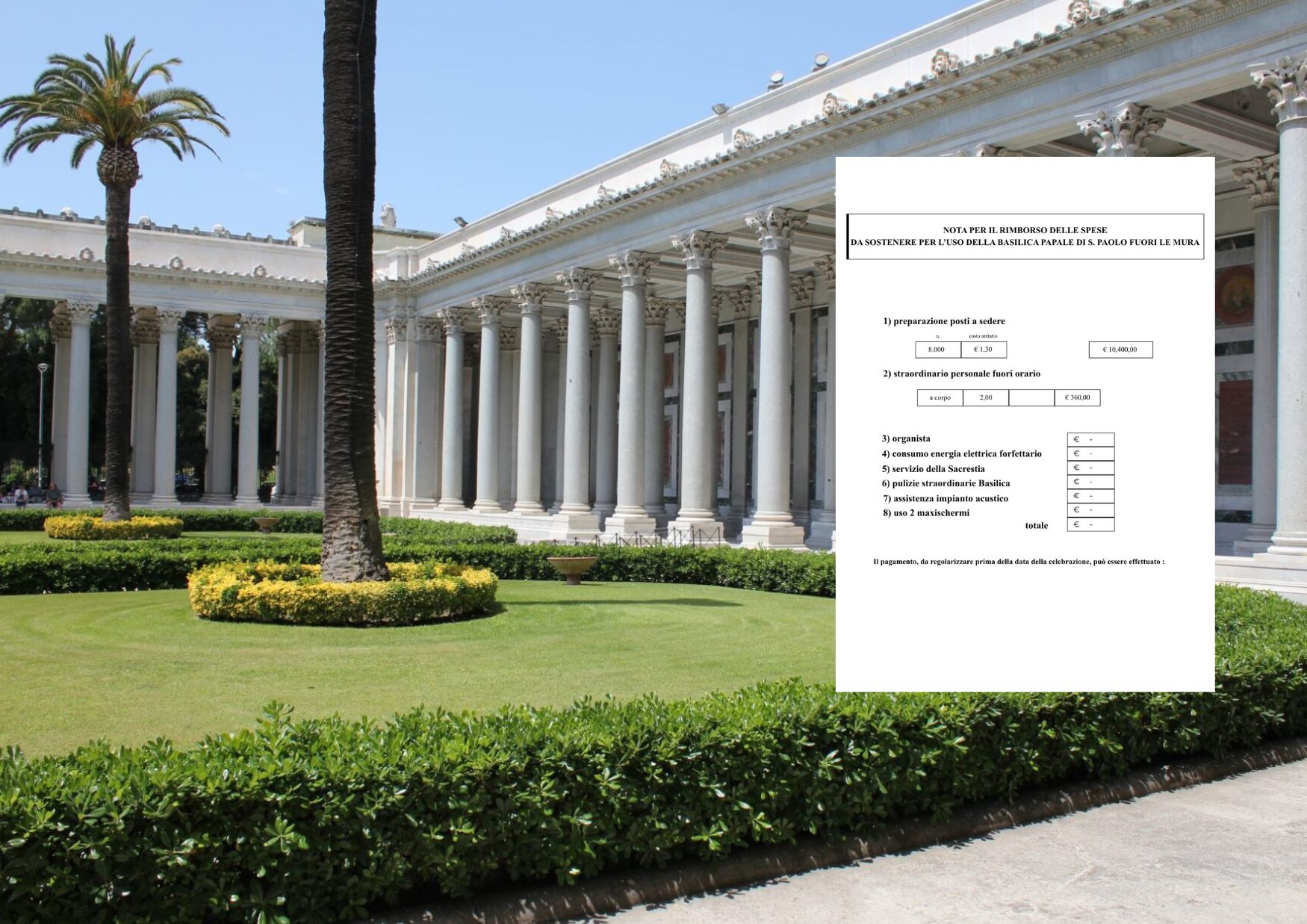Vatican City – While the Popes – first Francis and now Leo XIV – speak of a Jubilee of Hope, wishing it to be a time of faith, prayer, and conversion, there are those who see in the Jubilee something else: not grace, but business.
After all, we have already reported on Mauro Gambetti, the Franciscan who, when back in Assisi, dons his simple habit and sandals, but in the Vatican appears impeccable in a pressed clergyman’s suit with a pectoral cross, busy organizing refined buffets on the terraces of St. Peter’s and press conferences on fraternity. St. Peter’s Basilica has long been the stage of aggressive religious tourism, a fairground of spiritual marketing. Prayer, adoration, silence? Mirages evaporated since 2020. Gambetti has opened shops on Via della Conciliazione, struck deals with wealthy circles, and spent millions of euros on his whims.
But the contagion has not stopped under Bernini’s baldachin. Even St. Paul Outside the Walls, home to the Benedictine community of Donato Ogliari (already the protagonist of a bitter ending at Montecassino, after his hasty exit from Noci, where his confreres no longer wanted to hear from him), now seems to have decided it is time to cash in.

A Mass with a Price List
As is well known, pilgrims coming to Rome follow the route of the papal basilicas, marking the milestones of faith and venerating the relics of the saints. But at St. Paul’s, with the Jubilee approaching, faith has turned into a matter of estimates and invoices. A bishop, returning with his diocese from a pilgrimage to the Eternal City, commented bitterly: “So much for the Jubilee! To pray and celebrate at St. Paul’s we had to leave behind half the diocesan bank account!”
The Basilica provided groups with precise instructions: “For the strictly liturgical aspects of the celebration you may refer to the sacristy managed by the monks of St. Benedict. For the musical animation of the Holy Mass, and related technical aspects, you may contact directly the Maestro…”
The estimate, drawn up with almost obsessive precision, leaves nothing out. It begins with the chairs, no longer simple furnishings but a budget item: every pilgrim must pay to sit. €1.30 per chair, multiplied by the number of faithful. Then comes the music: the organist does not play out of devotion but for a fee (and what a fee!), with a single celebration costing several hundred euros. Flipping further through the document, other curious items appear: overtime for staff, flat-rate charges for electricity – and here the bishop, with a bitter smile, asked: “What, without us would they be sitting in the dark?” And that is not all. Added to the bill are sacristy services, technical assistance for the sound system, the use of giant screens, even heating. Every word of the estimate seems aimed at transforming the liturgy into a corporate event, complete with its own price list and contractual clauses. And as if that weren’t enough, the long expense sheet ends with the note that “to the total sum must be added the cost of services rendered by the Vatican Gendarmerie Corps of the Governorate of Vatican City State.” But are they not already on salary?
Naturally, none of this can be paid later: the sum must be settled in advance, before setting foot in the Basilica.
Pilgrims Turned Away
In the Cortile del Pappagallo, a monsignor recounts: “It often happens that, for alleged reasons of force majeure, already scheduled pilgrimages are canceled. Even at St. Peter’s. And sometimes these are groups arriving from abroad, who have booked hotels and restaurants and cannot cancel without losing all their money. They simply send a note, and that’s it – take it or leave it.” A style of management that seems less pastoral and more corporate, with all the bitter consequences.
Donation or Invoice?
That the basilicas have expenses to cover, no one denies. But between asking for a freewill offering and presenting a price list, there is a vast gulf. The bishop does not mince words: “It seems as though we have to buy the chairs. They are used and reused, not purchased anew. €1.30 per chair for every pilgrim? At this rate they’ll be buying them back covered in gold at the end of the Jubilee!”
Traditionally, pilgrims have always left generous donations, especially confraternities, dioceses, and ecclesial communities. But to transform the Holy Mass, a Jubilee event, into a detailed invoice – which in fact is not even an invoice – seems the latest confirmation of a climate where spirituality yields to accountancy.
d.S.V.
Silere non possum